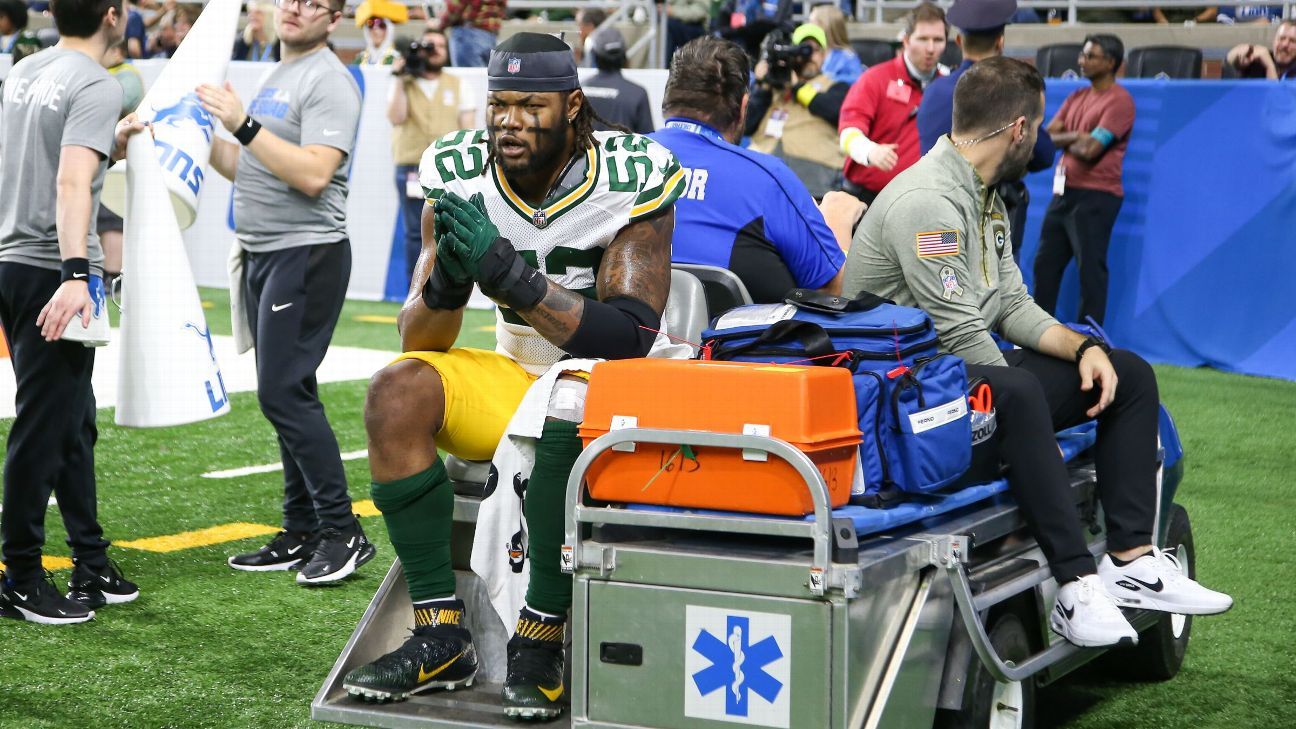The NFL’s recent rate of non-contact injuries to the knee, ankle and foot is roughly the same on natural and artificial playing surfaces, according to internal data reviewed Tuesday by ESPN.
The numbers contradict anecdotal observations this season from a wide swath of players, agents and coaches who have called for the league to convert all surfaces to grass in response to a series of high-profile injuries on artificial turf. But the NFL has no plans to do so, Dallas Cowboys owner Jerry Jones said Tuesday morning on 105.3 The Fan, citing the current data.
“Not at all,” said Jones, whose team plays in one of 16 NFL stadiums with an artificial playing surface. “And it’s not because we have the surface that we have. Our league stats don’t see issues with the type surface that we have as opposed to natural grass. We don’t see issues. No facts bear that out.”
The NFL and NFLPA use a third-party company known as IQVIA to compile and analyze data on every injury suffered during every season. Their joint Surfaces Committee uses the data to compare injuries in each of the 30 stadiums the league plays in, paying particular attention to injuries that occur without contact and could potentially be attributed to the surface itself.
Those injuries are classified as non-contact and to the lower extremities: knees, ankles and feet. ESPN obtained a chart that plotted those injuries over the past four seasons.
Data compiled for the NFL and NFLPA shows that injury rates on non-contact injuries to lower extremities are statistically the same on artificial turf vs. natural surfaces. Important context in the ongoing debate. pic.twitter.com/DAsPWBEdqC
— Kevin Seifert (@SeifertESPN) November 9, 2022
As recently as 2019, the rate of such injuries were notably higher on artificial turf fields rather than grass. But the difference between the two began narrowing in 2020, and by 2021, the numbers were almost the same. Artificial surfaces had an incident rate of .042 per 100 in 2021, while the incident rate for natural surfaces was .041 per 100.
That ratio “replicated” during the 2022 preseason, according to Jeff Miller, the NFL’s executive vice president of communications, public affairs and policy. Full data for the 2022 will be compiled at the end of the season.
“The takeaway from all of this data is that the discussion between synthetic surfaces and natural grass surfaces isn’t really the argument,” Miller said. “What we’re trying to do is decrease injuries on both. As a general matter, looking at synthetic versus natural doesn’t really provide us the information we need to try to drive those injury rates down.”
It is not entirely clear why the rate difference narrowed, although part of the reason is that injuries on grass increased from 2018 to 2021. Miller noted there is “more dynamism” in the artificial turf market, and that stadiums are ordering replacements on average of every two or three years. He also said the NFL and NFLPA are working with field managers to optimize care for the turf.
The NFL/NFLPA Surface Committee presented its findings to owners during last month’s meeting in New York, but the details had not previously been publicized. In the interim, players and coaches have been speaking out about injuries on artificial turf.
Most recently, after the Green Bay Packers lost pass rusher Rashan Gary to a non-contact ACL injury at Detroit’s Ford Field, Packers linebacker DeVondre Campbell tweeted: “I think it’s time y’all take some of the money y’all make off us and invest in grass fields for every team around the league. The turf is literally like concrete it has no give when you plant.”
Previously, Los Angeles Rams receiver Cooper Kupp said the difference between the two surfaces is “not even close.”
After Seattle Seahawks receiver DK Metcalf and Los Angeles Chargers cornerback J.C. Jackson both left a game at SoFi Los Angeles’ Stadium with non-contact knee injuries, Kupp added: “I know there’s stuff going around the league right now, there’s some issues. Hands down, we should be playing on grass. Hands down, we should be on grass. And that’s all I’m going to say.”
Seahawks coach Pete Carroll said the issue is something “we definitely need to look at this really seriously in the offseason again.”
“It’s been a discussion before,” Carroll said. “We’ve got to do what’s right, and we’ve got to do what’s safest for the players, and we’ve got to make those choices. I would pound on the drum for that.”
ESPN’s Sarah Barshop contributed to this report.
